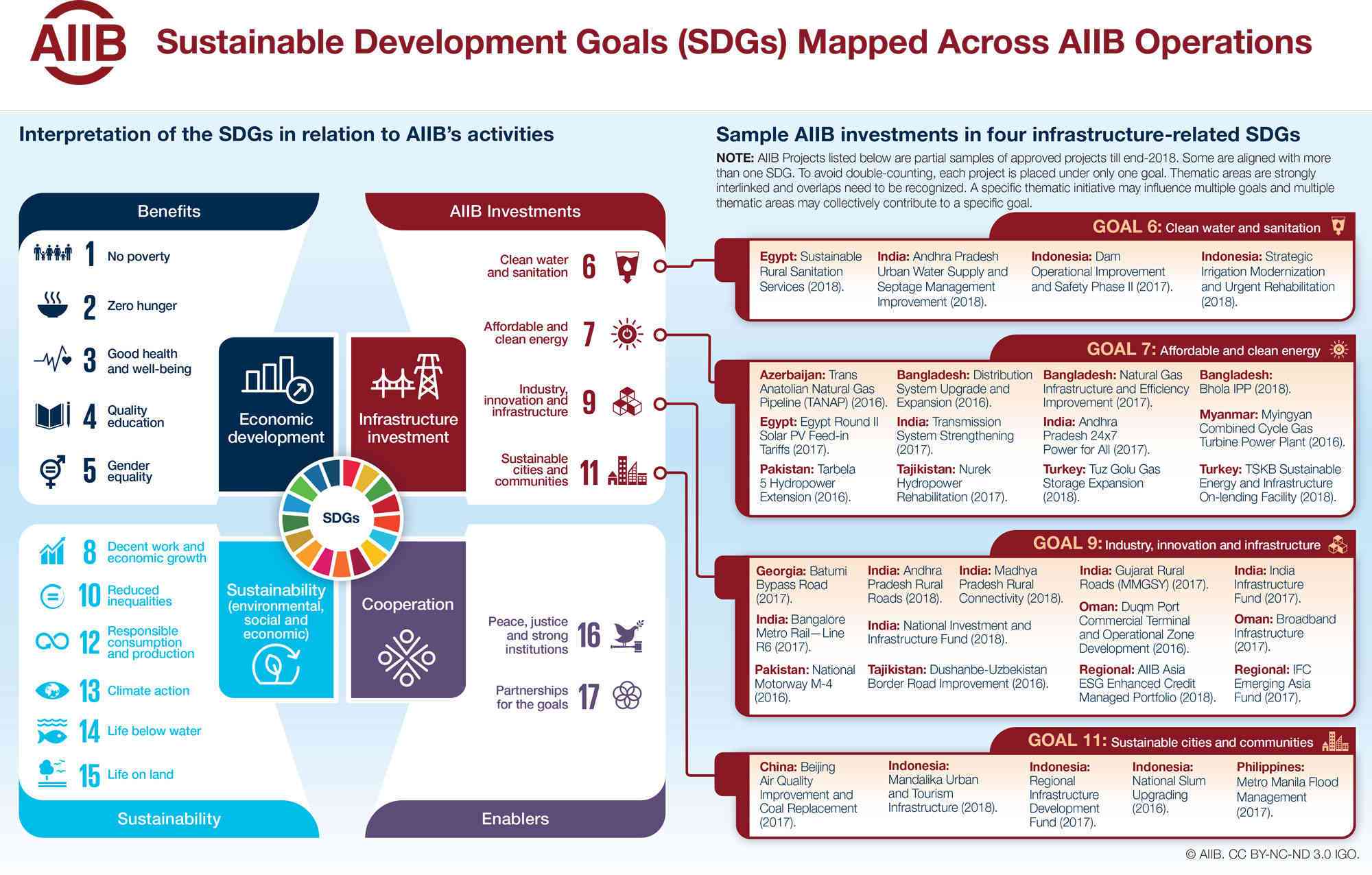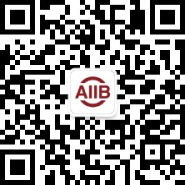In September 2015, the 193 countries of the United Nations adopted the 2030 Agenda for Sustainable Development, which includes 17 Sustainable Development Goals (SDGs) that aim to “end poverty, protect the planet, and ensure prosperity for all.”
In our modern world connected by global challenges, we need a global effort for solutions. Sustainable development is not just the responsibility of a few—it is the responsibility of all of us. To move from aspiration to action, it is everyone’s responsibility to reflect on how they can contribute toward the achievement of SDGs in their respective domains and putting those into actions.
As a multilateral development bank (MDB) established in the so-called “SDG era,” the Asian Infrastructure Investment Bank’s (AIIB) establishment is intrinsically linked to the global effort toward sustainable development. Understanding the SDGs is important for AIIB as all our members are committed to them. AIIB can contribute to the SDGs in four ways:
1) As a project-financing bank, AIIB can add value through investment projects. Broadly speaking, AIIB makes direct investments that contribute to four infrastructure-related SDGs:
- Goal 6: Clean Water and Sanitation
- Goal 7: Affordable and Clean Energy
- Goal 9: Industry Innovation and Infrastructure
- Goal 11: Sustainable Cities and Communities
Sustainable infrastructure is essential to meet the SDGs by enhancing access to basic services, promoting environmental sustainability and supporting inclusive growth. According to the UNESCAP report on the progress of SDGs in Asia, infrastructure-related goals are particularly lagging behind, and they correspond with large financing gaps in these sectors.
2) When investing in these sectors, we ensure adherence to high social and environmental standards through our Environmental and Social Framework (ESF). Our ESF is the first among those of multilateral development banks’ (MDB) similar documents that has emerged after the creation of the SDGs, and therefore gives recognition to the SDGs. AIIB’s ESF aligns with a broad range of SDGs, including SDG 5: Gender Equality, SDG 8: Decent Work and Economic Growth, SDG 10: Reduced Inequalities, SDG 12: Responsible Consumption and Production, SDG 13: Climate Action, SDG 14: Life Below Water and SDG 15: Life on Land. Application of the ESF in the Bank’s investments therefore corresponds to contribution to the SDGs related to environmental and social aspects.
3) The direct and indirect benefits emerging from our investments contribute to better well-being for beneficiaries, including benefits such as SDG 1: No Poverty, SDG 2: Zero Hunger, SDG 3: Good Health and Well-Being, SDG 4: Quality Education and SDG 5: Gender Equality.
4) Finally, we work in cooperation with our partners (SDG 17) to jointly contribute toward the SDGs in each of our respective domains. These partners include governments, other MDBs, the private sector and civil society organizations.
In AIIB’s 2018 Annual Report, I worked with Somnath Basu—AIIB’s Principal Social Development Specialist—in the first exercise on mapping how AIIB’s operations align with the SDGs. Until the end of 2018, AIIB has invested in over 34 projects aligned with SDGs. We hope to continue working with clients and partners to contribute toward this global commitment.


